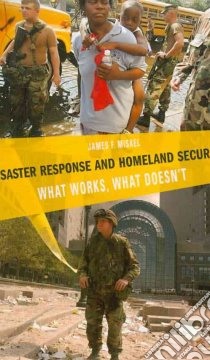Disaster Response and Homeland Security - 9780804759724
Un libro in lingua di Miskel James F. edito da Stanford Security Studies, 2008
- € 19.60
- Il prezzo è variabile in funzione del cambio della valuta d’origine
Hurricane Katrina is the latest in a series of major disasters that were not well managed, but it is not likely to be the last. Category 4 and category 5 hurricanes will, according to most predictions, become both more frequent and more intense in the future due to global warming and/or natural weather cycles. In addition, it is often said that another terrorist attack on the United States is inevitable; that it is a question of when, not whether. Add to that the scare over a possible avian flu pandemic. As a result, the United States should expect that disaster response?to natural and other types of disasters?will continue to be of vital concern to the American public and the policymakers and officials who deal with disaster response and relief, including the military. The U.S. disaster relief program reflects a basic division of responsibility between federal, state, and local governments that has generally stood the test of time. At the federal level, a single agency, FEMA?now under the Department of Homeland Security?has been charged with the responsibility for coordinating the activities of the various federal agencies that have a role in disaster relief. A successful disaster response requires three things: timely and effective coordination between state and federal governments; effective coordination among the federal agencies; and effective coordination between and among state and local government agencies. Miskel examines the effects that operational failures after Hurricanes Agnes, Hugo, Andrew, and Katrina have had on the organizational design and operating principles of the disaster response system program. He also discusses the impact of 9/11 and the evolving role of the military, and he identifies reforms that should be implemented to improve the nation's ability to respond in the future.
Informazioni bibliografiche
- Titolo del Libro in lingua: Disaster Response and Homeland Security
- Sottotitolo: What Works, What Doesn't
- Lingua: English
- Autore: Miskel James F.
- Editore: Stanford Security Studies
- Collana: Stanford Security Studies (Paperback)
- Data di Pubblicazione: 03 Marzo '08
- Genere: POLITICAL SCIENCE
- Pagine: 162
- Dimensioni mm: 234 x 152 x 12
- ISBN-10: 0804759723
- EAN-13: 9780804759724


